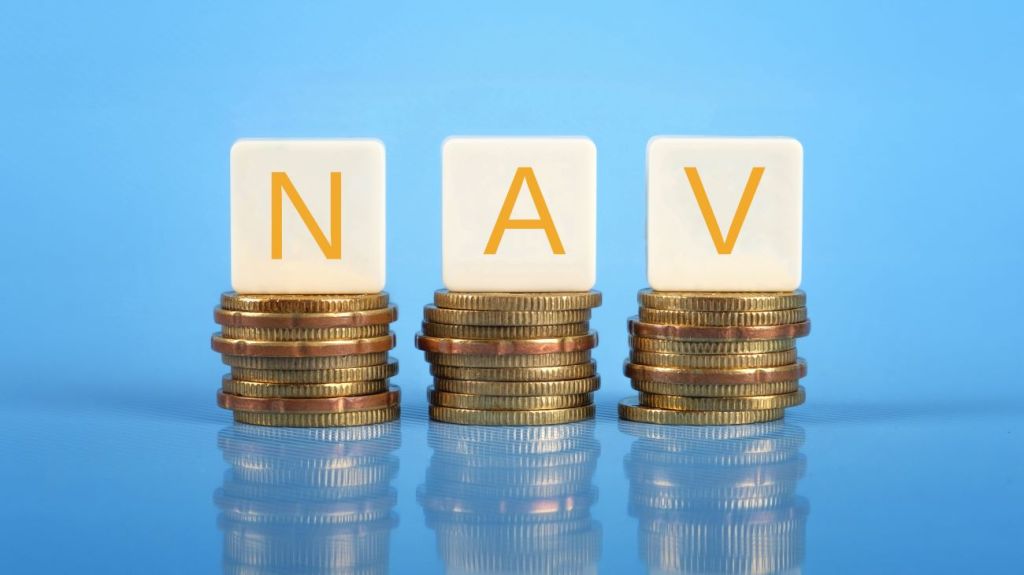Intro to Mutual Funds: An Easy-to-Understand Guide for Parents and Teens

“Investing.” It sounds like work, right? It sounds like hard, stressful work—the kind where you’re sitting at your computer, watching stock prices rise and fall, biting your fingernails, yelling for your assistant to bring you more coffee before remembering you don’t have an assistant and you don’t drink coffee…that kind of work.
But that kind of investing isn’t always the case, especially when it comes to more passive modes of investment, like mutual funds. Phew. If you or your teen is looking for somewhere to invest a few bucks, mutual funds might be a good fit.
In this primer on how mutual funds work in Canada, we explain what a mutual fund is, how mutual funds make money, the different types of mutual funds, how old you have to be to buy one, and if mutual funds are a good investment for your teen.
Key takeaways
- Mutual funds are investment products that can be made up of a range of other products, like stocks, bonds, and treasury bills.
- There are four main types of mutual funds: fixed-income funds, balanced funds, equity funds, and money market funds.
- Different risk levels are associated with each type of mutual fund, and part of someone’s decision about which one to choose should be based on their risk tolerance.
- Mutual funds pay out dividends to shareholders who can also earn money through capital gains or a net asset value increase.
- Teens under the age of majority in their province will need to partner up with a parent or guardian in order to buy mutual funds.
- Mutual funds work best for people looking to invest money for longer periods of time.
What is a mutual fund?
A mutual fund is a group of different types of investments, such as stocks, bonds, and other securities, which are together in a single fund. Think of a mutual fund as a group project. Remember back to your school days, when instead of having to write an essay or report all on your own, you and a bunch of your classmates contributed to a project, sharing the work and an investment in the outcome (See what we did there?).
With mutual funds, investors contribute money to a fund, which is then used to buy a selection of stocks or bonds or other investment products, all of which make up that fund. It’s the job of a money manager to supervise the mutual fund, keeping an eye on each of the products within it to make sure they’re performing well (read: making the investor money over the long term).
Learn more about basic investing terms.

What are the benefits of investing in a mutual fund?
The benefits of investing in mutual funds over individual stocks, for example, are twofold. First, it’s the responsibility of the money manager to monitor the investment. You (or, when the time comes, your teen) can still keep tabs on the investment, but with a money manager, you don’t have to make a full-time career out of tracking every little movement on the market and how it affects the fund you’ve chosen. Ever tried logging in to your portfolio tracker while out for a run? It’s a bit awkward.
The other big advantage of investing in mutual funds is that they’re a diversified investment product, meaning that even if someone invests in just one fund, their money isn’t all in one company. Because the fund is made up of a bunch of different stocks or bonds or other funds, if one of those products loses money, the effect of that loss is mitigated by the fact that only a fraction of the investor’s money is tied to that individual product.
How to earn money on mutual funds
Now that you can explain to your teen what a mutual fund is, let’s get to the really important stuff, like how can a mutual fund make your teen some cash money? There are a few ways, actually. Here they are:
Dividend payments
If you’ve ever had a family Monopoly game night, then both you and your teen have probably seen the term “dividend.” A dividend is the income earned on a stock as its value rises. The owner of the mutual fund receives regular payments (usually annually) called a distribution that is derived, in part, from the dividends earned on each stock in the fund. That money can either be added to the amount they’ve already invested in the fund, or the investor can request that it be paid out directly to them.
Capital gains
Part of the money manager’s job is to buy and sell individual products within the fund. If stock is sold at a price above what it was purchased for, that is a capital gain. These are also paid out to investors in the distribution. Score!

Net asset value (NAV) increase
If we’re talking about a mutual fund’s net asset value, or NAV, we’re referring to the price of each share in the fund at the end of each trading day. This price is determined by dividing the sum value of the fund’s security holdings (the assets minus the liabilities) by the number of outstanding shares (the number of shares owned by investors). The NAV is the unit price of a single share in the fund, and a fresh new one is calculated every day.
When the price of those shares goes up, it’s called a NAV increase. If the investor sells their share in the fund after such an increase, they would come away with a profit.
Is it possible to lose money on mutual funds?
Possible? Yes. Less likely than losing money by investing in individual stocks? Also yes. Different mutual funds offer different levels of risk (we’ll cover the types of funds and associated risk levels in a minute). But, generally speaking, the long-term nature of mutual funds means risk should be minimal, and drops in value are mitigated by other increases over time.
This makes mutual funds a smart investment product for young people looking for a place to put their money with the hopes of seeing long-term gains.
What are the different types of mutual funds?
Once your teen decides that a mutual fund is where they’d like to put their investment money, the next step is to choose which type of fund works best with their financial goals and risk tolerance. Here are some of the most common funds in Canada:
1. Fixed-income funds
If your teen grows into an investor who values security and consistency over big earnings, then low-risk fixed-income funds are going to be their jam. These funds typically consist of investment products with values that don’t fluctuate a whole lot. Think: bonds, money market funds, or treasury bills issued by the Canadian government. The investment term lengths come in three sizes: short-term (under three years), medium-term (three to 10 years), and long-term (10 years or more). These funds won’t make your teen rich overnight, but they might sleep better knowing that the risk of losing their money is pretty low.
2. Equity funds
If your teen is willing to take a risk with their money if it means it might grow faster, then equity funds are where they’ll want to invest. These funds are real go-getters when it comes to earnings, and they invest where the returns are likely to be the highest: stocks. Of course, that means more risk since the stock market can be a volatile place. Remind your teen to consider their options and choose carefully.
3. Balanced funds
Ah, TFW you can have the best of both worlds! Balanced funds mix it up (balancing risk and reward) by including fixed-income assets (like bonds) and equities (like stocks). Some balanced funds lean more toward equities with higher payoffs plus more risk, while others take a cautious approach, offering a bit more stability. Again, your teen’s future self is choosing their fund based on their financial goals and how OK they feel about risk.
4. Money market funds
Will your teen be short on investing time? Think they’ll have trouble making a long-term investment plan? Money market mutual funds will have their back. These funds are made up of investment products that are super liquid, like cash, and have short-term maturity periods, like treasury bills. These types of mutual funds are for investors looking for low risk and a temporary home for their investment capital. They don’t make for good long-term investments, however, because they don’t pay much in the capital appreciation department.
While these four categories cover the main types of mutual funds, there are also some specialized products:
- The fund of funds: You can probably tell from its name that it’s a mutual fund made up of other mutual funds.
- Managed payout funds: These funds give investors regular cash payouts.
- Specialty funds: This category of mutual fund invests in non-traditional areas, like venture capital projects.
How do you choose a mutual fund?
Think your teen (or you!) is ready to get into the mutual fund game? Once they’ve decided that mutual funds are the right type of investment for them and their money, it’s time to pick the fund that’s the right fit. Based on factors like time and risk acceptance or aversion, they’ll want to choose a fund that falls into one of the categories we just talked about.
Then it’s time to dig deeper. Here are some of the details your teen will want to investigate:
- Does this fund charge high fees?
- What kinds of fees are associated with the fund?
- Are the fees paid out of your returns, or does the fund itself cover some of the fees?
- What is the fund’s management expense ratio (determined by its management fee and operating expenses)?
- How well has it performed in the past?
- What is the minimum investment amount that the fund requires?
It’s a good idea to contrast and compare these factors across all of the funds they’re considering investing in.

How old do you have to be to buy mutual funds?
To buy a mutual fund, you must be the age of majority in your province, but kids and teens under 18 years old can still own funds in an arrangement known as an informal trust, or ITF. In this case, birthday money or part-time job earnings can be invested in a mutual fund held in trust for a child by a parent or guardian. When it comes to mutual funds, this is a smart strategy because of the product’s long-term investment nature.
Are mutual funds a good investment for teens?
Of course, there are pros and cons to investing in mutual funds as a teenager. On the upside, they provide a lower risk place to save and grow their money for future investments (like their education or first home). On the downside, the lower the risk, the more slowly earnings stack up—which isn’t ideal if they aren’t willing to invest for long periods of time.
Besides time, teens should consider the higher fees associated with mutual funds, a drawback balanced by the expert money manager (They’ll get what they pay for, right?). There’s also the element of diversification, which is even more concentrated in balanced funds—a major pro that can boost their investing confidence in terms of risk tolerance.
The benefits of investing in mutual funds are amplified when it’s done through a registered plan, like a tax-free savings account (TFSA). That’s because a TFSA allows (within annual limits) for tax-free investing up to a certain amount.
Whether or not your teen decides that mutual funds are the right place to put their money, learning about them will help to expand their financial vocabulary and increase their potential to become a smart saver, investor, and spender. Mutual funds are just one of the many ways available to invest and grow their savings based on their future plans and financial goals. Knowing how they function and what they offer investors are more tools in the money-smart tool kit you’ve been helping your teen build with Mydoh.
Download Mydoh and help build the foundation of financial literacy for your kids and teenagers.
This article offers general information only and is not intended as legal, financial or other professional advice. A professional advisor should be consulted regarding your specific situation. While the information presented is believed to be factual and current, its accuracy is not guaranteed and it should not be regarded as a complete analysis of the subjects discussed. All expressions of opinion reflect the judgment of the author(s) as of the date of publication and are subject to change. No endorsement of any third parties or their advice, opinions, information, products or services is expressly given or implied by Royal Bank of Canada or its affiliates.













